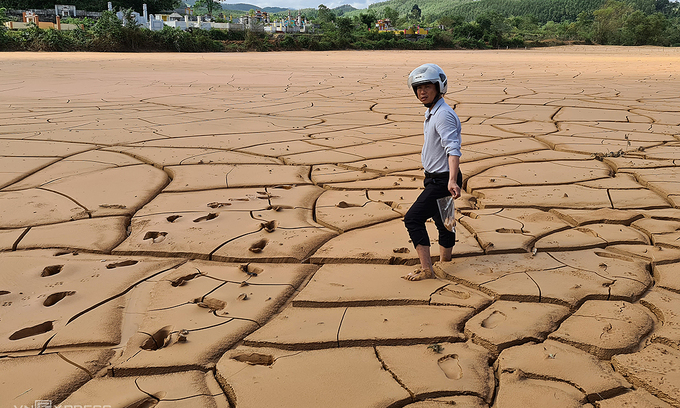
A man takes soil samples over what used to be a paddy field in Quang Binh Province to test its toxicity, December 1, 2020
Ho Van Rao's lush green fields in Quang Tri were buried under more than two feet of boulders, sand and other debris.
The field was the primary source of income to feed his family of three.
As he inspected the damage done by the prolonged flooding central Vietnam has had to suffer, he noted that some paddy sections had been swept away by floodwaters, while his tapioca field, cultivated over the past 10 months, was buried in rubble.
"We don’t know what to plant to make a living," said Rao, a 46-year-old resident of Huong Son Commune in Quang Tri’s Huong Hoa District. Two wet bags of grains they have are all that’s left for the next six months, he said, adding that on sunny days, he would put them out to dry.
The Huong Son Commune has over 192 ha of paddy fields, but around 90 ha were buried under rocks and wood rotting deposited by the floods, rendering them unusable and irrecoverable. Le Trong Tuong, chairman of the Huong Son People’s Committee, said residents were facing food shortages in the future for people.
In Quang Binh Province’s Bo Trach District, Le Xuan Uyen, 56, sees his field buried under mud and soil a meter deep, meaning he cannot plant new saplings for the winter-spring season without putting in significant time and efforts to clean the place up.
Worse still, the soil the fields are buried under has toxic properties that would kill paddy if they’re planted, he said. "We are worried because we have missed the season for planting, and we don’t know what to plant anyway."
The Vietnam Academy of Agricultural Sciences said the top soil layer that covers several areas in Bo Trach District is actually heavy clay layers, which would make it difficult for cultivation if left as it is. Farmers should switch to different plants to adapt to the new layers, the academy has suggested.
Around 1,650 ha of fields in Quang Tri were inundated in the past month. Provincial authorities are now cooperating with the people to salvage the buried fields to prepare for the winter-spring planting season in just a month, said Ha Si Dong, deputy chairman of Quang Tri. But as the fields are large, ample time, it would take a lot of people and equipment to complete the job, he added.
Recovery efforts should be completed by mid-December so new saplings can be planted for the winter-spring season on time, Quang Tri authorities have said.
Quang Binh and Quang Tri were among several central Vietnam localities struck by heavy rains, flooding and landslides triggered by numerous storms and tropical depressions in recent months. Property losses from the disasters are estimated at around VND30 trillion ($1.3 billion), according to the government.